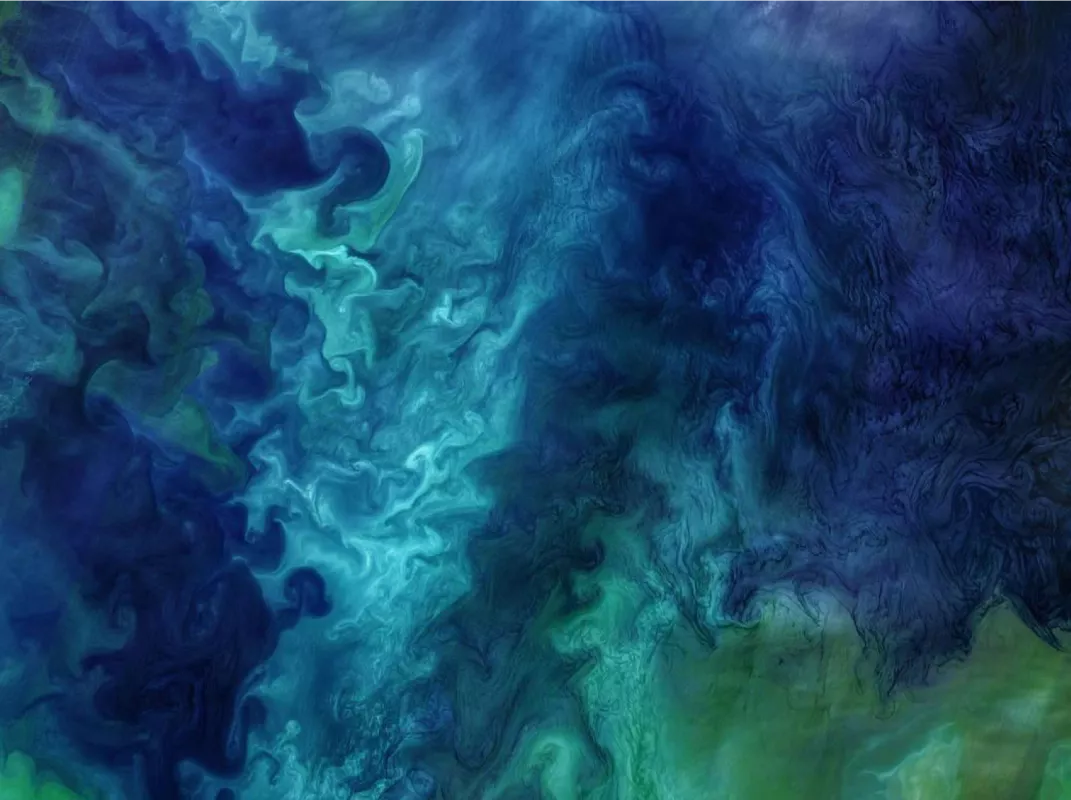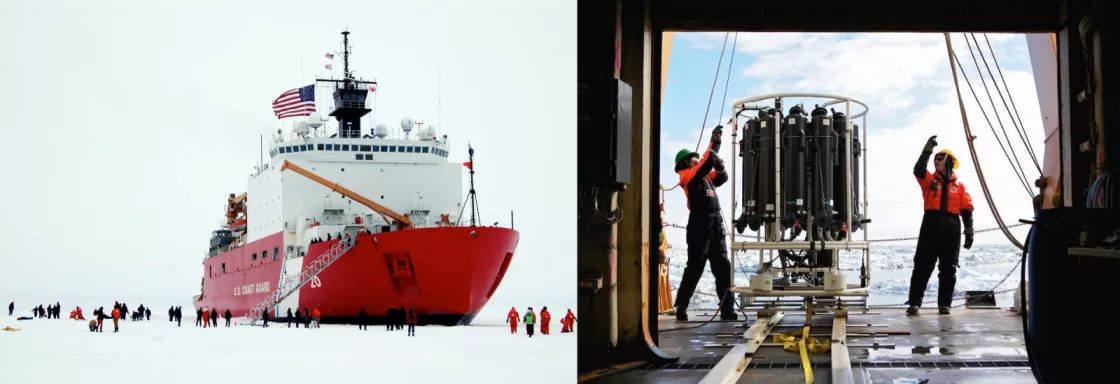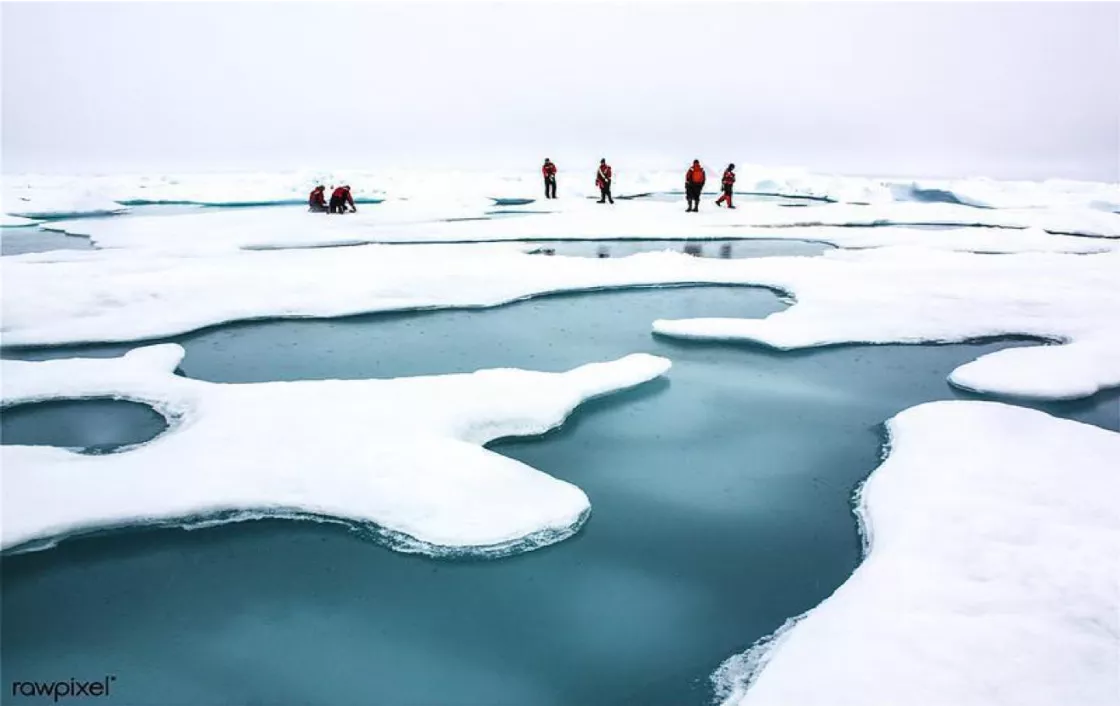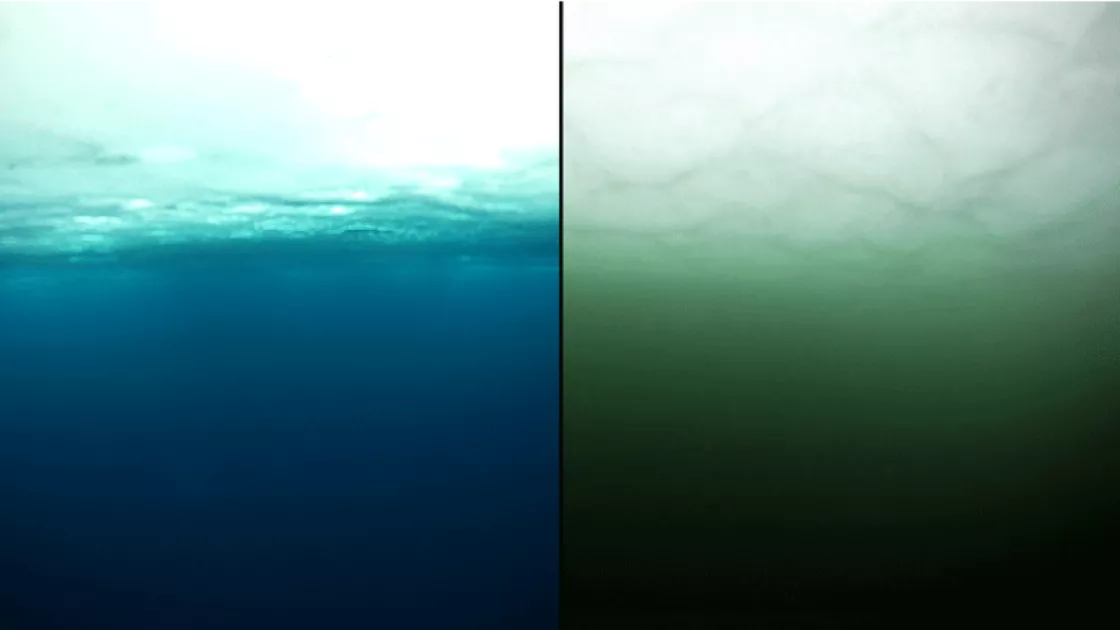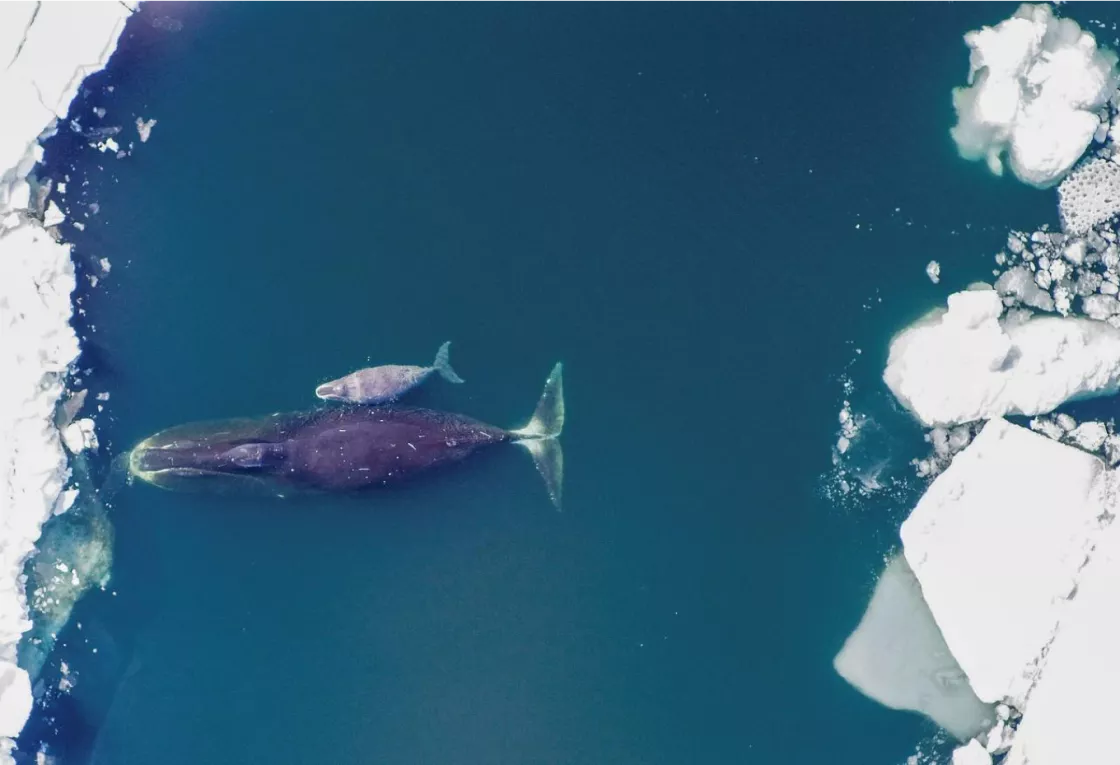By Tori McLeod
Kate Lewis, a researcher at Stanford University studying the Arctic Ocean, laughed as she recalled what her mother said: “I don’t understand why you wouldn’t rather work in the tropics.” After all, working in such a barren, cold locale as the Arctic seems a bit odd to most people. But to Lewis, it is a critical environment to understand.
The Arctic is warming two to three times faster than the global average, experiencing dramatic changes. In the summers of 2010 and 2011, researchers on the ICESCAPE (Impacts of Climate change on Eco-Systems and Chemistry of the Arctic Pacific Environment) field expeditions discovered the largest phytoplankton bloom ever recorded, and surprisingly, under thick sea ice in the Chukchi Sea long before their expected arrival. “This discovery was completely remarkable,” Lewis said. The general assumption had been that Arctic phytoplankton blooms—rapidly accumulating phytoplankton—flourish once sea ice melts because these microscopic algae function like any other plant: they need sunlight and nutrients to grow and reproduce. “So it was really shocking to see a massive bloom beneath the sea ice that was more productive than any bloom that had ever been recorded up there,” Lewis said.
Phytoplankton fuel the Arctic food web, affecting the entire marine ecosystem. A shift in the timeline of phytoplankton’s peak production can impact the fish, zooplankton, and migratory animals like whales and birds that feed on it. When these animals miss the arrival of phytoplankton, the food web is disrupted and an insufficient food supply ripples up the chain, including the fisheries many Alaskan communities depend on.
While Lewis was not on the 2010 and 2011 ICESCAPE missions, in 2013, she joined the subsequent mission called SUBICE, or the Study of Under-ice Blooms in the Chukchi Ecosystem. With the support of National Snow and Ice Data Center (NSIDC) sea ice concentration data, the team of researchers tried to catch the under-ice bloom again and understand the survival mechanisms at play in this dark, harsh place.
Basking in the sun
Using sea ice concentration data from 1978 to 2014, the team could characterize the amount of light hitting the ocean surface at the time of their sampling—high or low light. The data were then validated using “ice watch,” which was essentially someone standing on the bridge of the vessel giving a visual approximation of ice cover. The ice concentration data, used in conjunction with the team’s light measurements and their understanding of how it is transmitted, helped the team estimate how much light was actually hitting the ocean surface.
After taking measurements of light below the sea ice, scientists realized that, in fact, enough light penetrated the sea ice with overlying melt ponds to support massive blooms of phytoplankton. Melt ponds are vibrant, turquoise pools of water that form as the blanket of snow covering the sea ice begins to melt in the spring and summer. Since sea ice is not a completely flat surface, melted snow pools in its dimples and creates ponds. These ponds absorb more heat from the incoming sunlight since they are darker than the surrounding white ice, which reflects more than 90 percent of incoming light; the increased absorption melts more ice and increases the depth of the pond. As ice thins, light reaches the ocean surface below and triggers phytoplankton growth.
Growing stronger
On the 2011 ICESCAPE mission, the scientists believed they caught the bloom right at its peak, and the goal for SUBICE was to catch that again. However, that proved to be a challenge. “We had a really specific time we wanted to capture. But nature decides the right time,” Lewis said. The team anxiously waited for the ponds to melt, signaling them to the subsequent bloom.
The team anxiously waited for the ponds to melt, signaling them to the subsequent bloom. Unfortunately, they waited and waited, through the snow and the cold, but those classic deep melt ponds never fully formed.
Although the cruise arrived before the peak bloom, they were surprised to measure a substantial amount of biomass beneath the ice even before the presence of melt ponds. Nonetheless, their early arrival allowed them to hone in on the pre-bloom period, when conditions are not necessarily ideal for phytoplankton. The team learned how phytoplankton survive in this inhospitable environment, transitioning from a light-limited system before the bloom to a nutrient-limited system after. According to Lewis, that was really the focus of her study. She said, “Not only were there phytoplankton, but they were really healthy, ready to grow, and, to my knowledge, [my paper] is the first paper that showed that they were well acclimated to conditions beneath snow-covered ice.”
In the spring, her team discovered that prior to sea ice retreat and melt pond formation, the under-ice environment while very dark is loaded with high nutrient concentrations, like nitrogen, which is essential for phytoplankton growth. With ample nutrients, phytoplankton increased their concentration of photosynthetic pigments to maximize light absorption and effectively acclimate to the extreme low-light conditions. Surprisingly, beneath the ice, phytoplankton achieved exceptionally high photosynthetic rates and efficiency, which paired with effective light absorption, primed them for the subsequent light increase beneath the sea ice.
Looking forward
Like the canary in the coal mine, Arctic warming warns us of what the rest of the planet may face. In the Arctic Ocean, thick, multiyear ice is being replaced by thin, first-year ice, increasing the likelihood of melt pond formation and amplifying the amount of light hitting the ocean surface. Since phytoplankton are well-acclimated to grow under extremely low-light conditions, scientists anticipate that phytoplankton blooms may continue to occur earlier in the season, throwing off the timing of Arctic ecosystem processes.
“The Arctic is a very specifically timed environment,” Lewis said. “We know a typical seasonal cycle, and not only do we know it, but all the migratory animals know it.” We can already see the impacts of earlier blooms in Arctic seabirds. Studies from the last five years have reported massive seabird die-offs in the Bering and Chukchi Seas. In August of 2019, over 3,500 seabird carcasses were found. Initial examination pointed to starvation as the cause of death.
“Scientific results are not good or bad, they just are,” Lewis said when asked about climate change impacts. “If you want to put good and bad on it, then you can think of it as climate change winners and losers, and of course some things are going to win when there’s more production in the ocean.” The losers may be those migratory animals arriving late relative to the phytoplankton peak bloom. On the other hand, the so-called winners could be bottom-dwelling organisms, like clams or invertebrates, which would receive more food from the sinking phytoplankton that goes uneaten. To Lewis, it is important to take a step back and look at the consequences of phytoplankton blooms in the context of the environment as a whole. “I think it’s inherently interesting to study [the Arctic] because we’re seeing the effects on a totally different scale than the rest of the world in terms of climate change,” she said, and while it may be depressing, “you really can’t get a better case study.”
Reference
Lewis, K. M., A. E. Arntsen, P. Coupel, H. Joy-Warren, K. E. Lowry, A. Matsuoka, M. M. Mills, G. L. Van Dijken, V. Selz, and K. R. Arrigo. 2018. Photoacclimation of Arctic Ocean phyotplankton to shifting light and nutrient limitation. Association for the Sciences of Limnology and Oceanography, doi:10.1002/Ino.11039.
